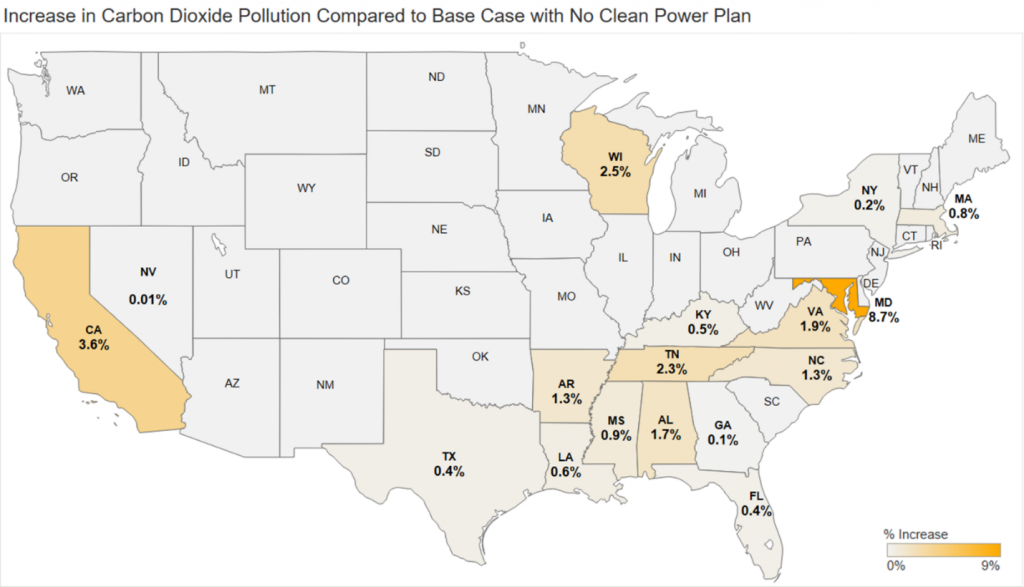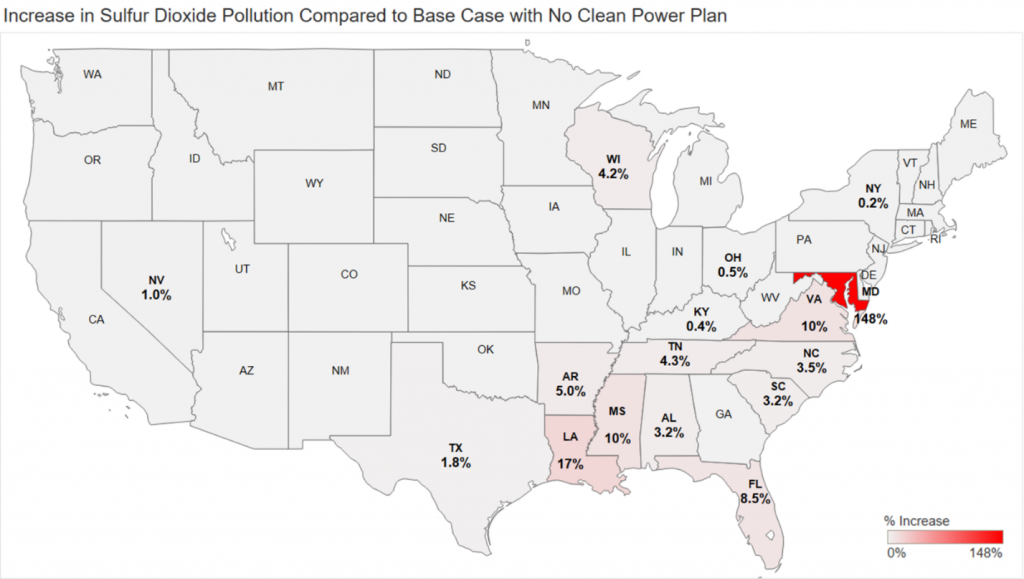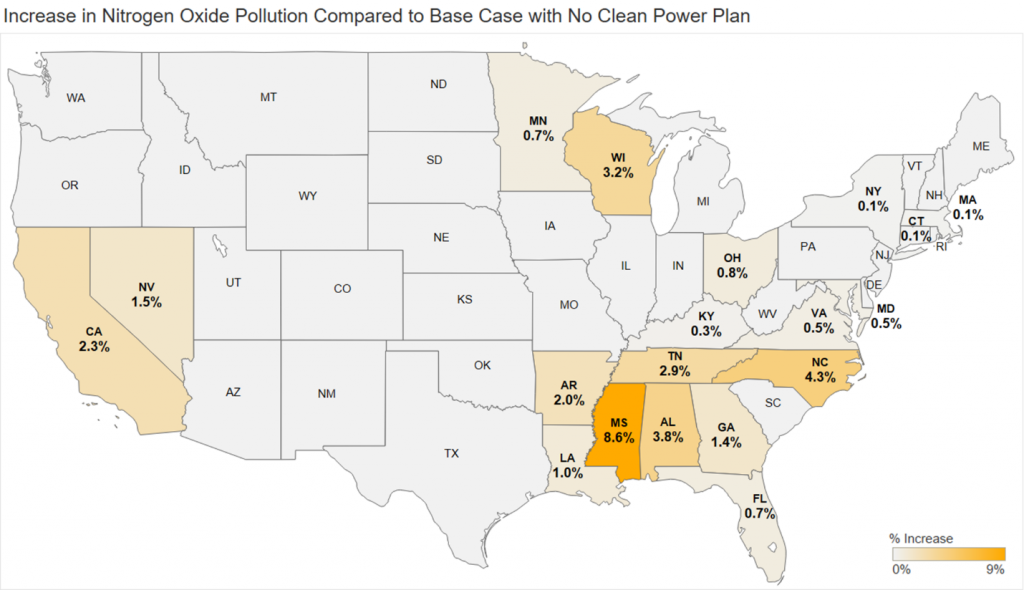The Trump Administration’s proposed “replacement” for the Clean Power Plan would not only increase dangerous climate pollution and cost American lives – it would actually be worse than doing nothing at all in many states.
The proposal would severely weaken our nation’s only limits on carbon pollution from existing power plants. It would increase climate and health-harming pollution from those plants, and would lead to more premature deaths compared to leaving the Clean Power Plan in place.
But that’s not all – EPA’s own numbers show that the proposal would also increase pollution in many states compared to a world without the Clean Power Plan.
In many states, this proposal would leave communities worse off than if the Environmental Protection Agency (EPA) had done nothing at all.
The proposal requires states to consider setting standards based on a narrow set of tweaks to the operating efficiency of coal-fired power plants, called “heat rate improvement” measures.
To be clear, the proposal contains no binding limits on carbon pollution. In other words, it is not designed to achieve any particular level of carbon pollution reduction by any specific time.
The proposal merely provides a menu of heat rate improvement measures that would modestly improve the operating efficiency of coal plants and leaves it up to the states to decide which – if any – of these measures to apply. Nevertheless, in its Regulatory Impact Analysis, EPA models heat rate improvement scenarios ranging from 2 to 4.5 percent to illustrate the potential climate and health impacts of its proposed replacement.
According to EPA’s Regulatory Impact Analysis, the proposal would result in slight nationwide reductions in carbon pollution compared to a base case without the Clean Power Plan – roughly one percent lower carbon dioxide emissions in 2030. While these national reductions are ridiculously insignificant, they also mask the actual increases in pollution that could happen at the state-level.
EPA’s own modeling shows that the proposal could increase carbon pollution in as many as 17 states – Alabama, Arkansas, California, Florida, Georgia, Kentucky, Louisiana, Maryland, Massachusetts, Mississippi, Nevada, New York, North Carolina, Tennessee, Texas, Virginia, and Wisconsin – by 2030 compared to a world without the Clean Power Plan.
In addition, many states would see an increase in harmful pollution that contributes to soot and smog.
According to EPA’s own numbers, sulfur dioxide pollution could increase in as many as 16 states – Alabama, Arkansas, Florida, Kentucky, Louisiana, Maryland, Mississippi, Nevada, New York, North Carolina, Ohio, South Carolina, Tennessee, Texas, Virginia, and Wisconsin – by 2030 compared to a base case without the Clean Power Plan.
EPA’s own numbers also show nitrogen oxide pollution could increase in as many as 19 states – Alabama, Arkansas, California, Connecticut, Florida, Georgia, Kentucky, Louisiana, Maryland, Massachusetts, Minnesota, Mississippi, Nevada, New York, North Carolina, Ohio, Tennessee, Virginia, and Wisconsin – by 2030 compared to a base case without the Clean Power Plan.
Several expert analyses have already shown that policy approaches based on coal heat rate improvements alone would result in increased utilization of coal plants and associated increases in emissions – also known as the “rebound effect.”
According to a recent paper by Resources for the Future, a policy approach based only on measures such as coal heat rate improvements would result in minimal improvements in carbon pollution and increases in sulfur dioxide pollution at the national level compared to no policy at all. The paper also shows that carbon pollution would increase in some states compared to a no-policy reference scenario since any emission reductions from heat rate improvements are more than offset by increased coal generation, which drives up emissions.
EPA’s own analysis shows that national coal generation increases by as much as four percent in 2030 under the proposed replacement compared to a base case with no policy, with larger increases happening at the state-level.
Analysis by scientists at Syracuse and Harvard Universities also shows that, compared to doing nothing, replacing the Clean Power Plan with a narrower option based on coal heat rate improvements alone would make air quality worse and endanger more lives.
EPA has a legal obligation to establish carbon pollution limits that achieve maximum feasible pollution control and protect the public from the urgent threat of climate change. Instead, the Trump administration proposal would increase climate and health-harming pollution in many states and endanger the health and well-being of Americans.












